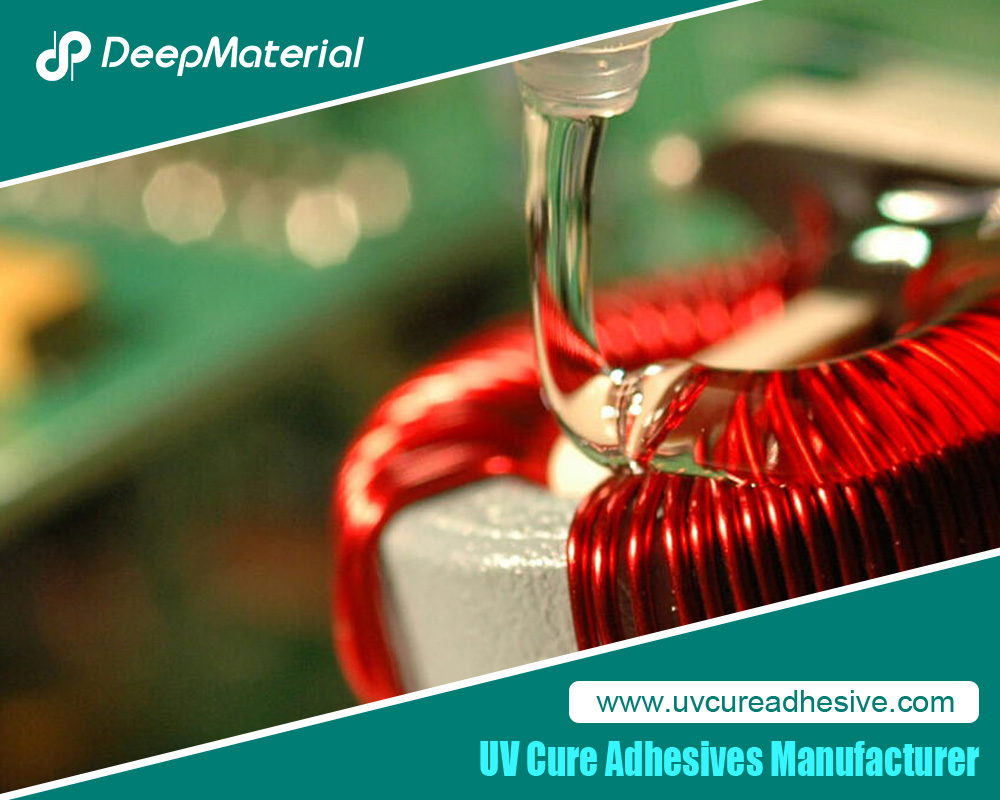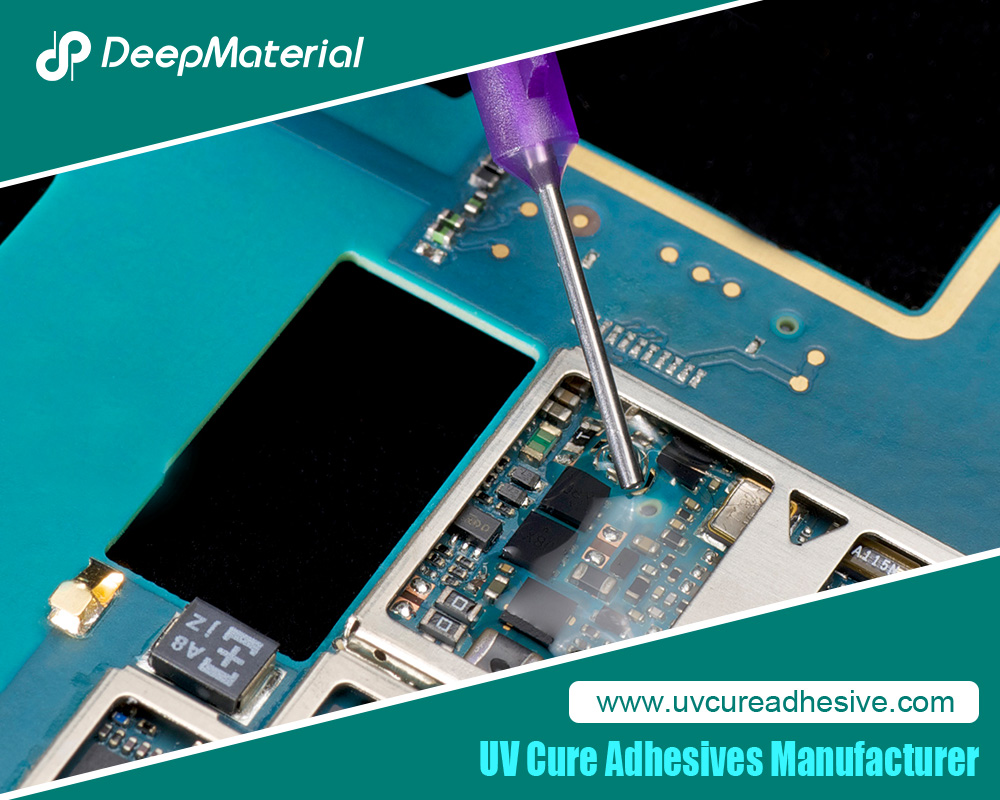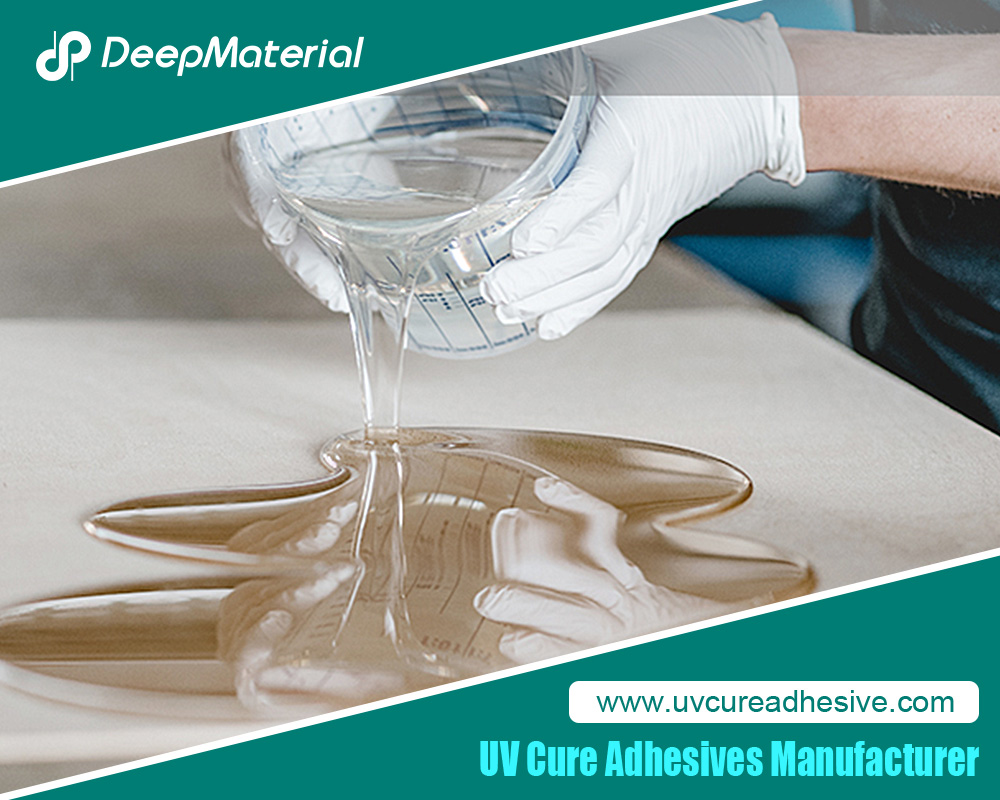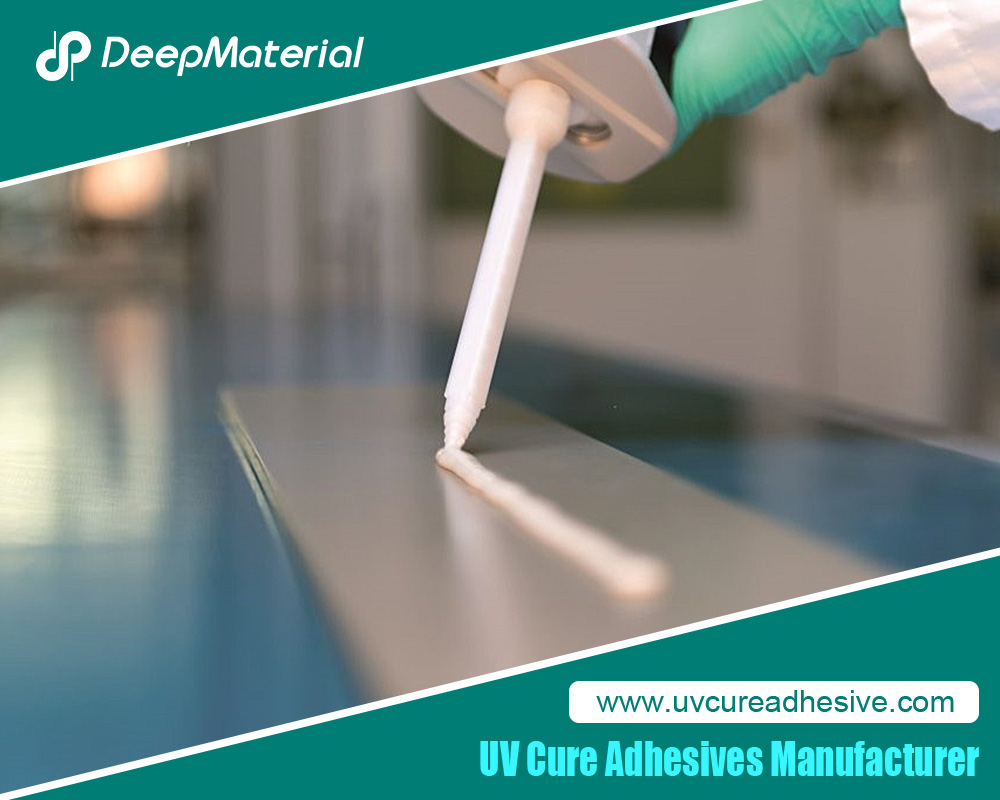Technical Strategies for Balancing the Rapid Curing Property and Long Operating Time of UV Adhesives
UV adhesives have been widely used in many fields such as electronics, optics, and medicine due to their advantages of rapid curing, high bonding strength, and environmental protection. However, their rapid curing property also brings challenges in some application scenarios. For example, in complex assembly processes, sufficient operating time is required to accurately place and adjust the bonded components. But the too-fast curing speed may cause the components to cure before they are adjusted in place, affecting the bonding quality. Therefore, how to extend their operating time (open time) while ensuring the rapid curing advantage of UV adhesives has become a key issue in the research, development, and application of UV adhesives. And choosing appropriate initiators and monomers is an important way to solve this problem.

Curing Mechanism of UV Adhesives
The curing of UV adhesives mainly depends on the photolysis of photoinitiators. When the UV adhesive is irradiated by ultraviolet light of a specific wavelength, the photoinitiator absorbs photon energy and undergoes a photolysis reaction, generating free radicals or cations. These active species can initiate the polymerization reaction of double bonds in monomers or prepolymers, thus transforming the adhesive from a liquid state to a solid state rapidly and achieving curing. Factors such as the activity of the photoinitiator, the reactivity of the monomer, and the intensity and irradiation time of the ultraviolet light all directly affect the curing speed of the UV adhesive.
Effects of Initiators on Curing Speed and Open Time
(1) Free Radical Type Initiators
- Common Free Radical Type Initiators: Common free radical type initiators include benzoin and its derivatives, acetophenone derivatives, etc. When benzoin ethers and other benzoin-based initiators absorb ultraviolet light, the C-O bond in the molecule breaks, generating benzoyl radicals and alkoxy radicals, which initiate the polymerization of monomers. Acetophenone derivatives such as benzophenone and α-hydroxyketone initiators can more effectively generate free radicals when used in combination with co-initiators (such as tertiary amines).
- Effects on Curing Speed and Open Time: Photoinitiators of different structures have different photolysis efficiencies, and the speeds of initiating polymerization also vary. Generally, α-hydroxyketone initiators have high photoinitiation activity, which can make the UV adhesive cure rapidly, but the open time is relatively short. Benzoin-based initiators have slightly lower photolysis activity, which may extend the open time to a certain extent, but the curing speed will also slow down accordingly. To balance the two, a combination of multiple initiators can be used. For example, mixing a high-activity α-hydroxyketone initiator with a benzoin-based initiator with lower photolysis activity in a certain proportion can not only ensure a relatively fast curing speed but also appropriately extend the open time.
(2) Cationic Initiators
- Action Principle of Cationic Initiators: Cationic initiators mainly include aryl diazonium salts, triarylsulfonium salts, etc. Under ultraviolet light irradiation, these initiators generate strong proton acids or Lewis acids, initiating the cationic polymerization reaction of monomers or prepolymers containing epoxy groups, vinyl ether groups, etc. The cationic polymerization reaction has the advantages of fast reaction speed and no inhibition by oxygen.
- Regulation of Curing Speed and Open Time: The activity of cationic initiators can be adjusted by changing their structure and concentration. For example, increasing the electron density of the aryl group in the triarylsulfonium salt can improve its initiation activity and accelerate the curing speed. At the same time, since the active species (such as proton acids) in the cationic polymerization reaction are relatively stable and not easy to deactivate, compared with free radical polymerization, the cationic polymerization system can provide a relatively long open time to a certain extent. In the actual formulation, cationic initiators can be used in combination with free radical initiators, taking advantage of the long open time of cationic polymerization and the rapid curing characteristics of free radical polymerization to achieve the balance between the two.
Effects of Monomers on Curing Speed and Open Time
(1) Reactivity of Monomers
The structure of monomers determines their reactivity. Monomers containing multiple double bonds, such as trifunctional or polyfunctional acrylate monomers, have high reactivity and can undergo cross-linking polymerization rapidly under free radical initiation, causing the adhesive to cure quickly, but it will also shorten the open time. Monofunctional acrylate monomers have relatively low reactivity and slower polymerization speed, which helps to extend the open time, but may reduce the final curing strength and hardness. Therefore, in the formulation design, different functional monomers need to be reasonably combined according to specific application requirements. For example, mixing a certain proportion of difunctional acrylate monomers with monofunctional acrylate monomers can not only ensure a certain curing speed but also appropriately extend the open time and meet the requirements for bonding strength at the same time.
(2) Dilution Effect of Monomers
In addition to participating in the polymerization reaction, monomers also play a role in diluting prepolymers and adjusting the viscosity of the adhesive. Low-viscosity monomers can make the adhesive easier to coat and spread during the operation process, which is beneficial to extending the operation time. For example, low-viscosity monomers such as isooctyl acrylate can be added to the UV adhesive formulation to reduce the system viscosity, allowing the adhesive to have more time for adjustment during the component assembly process, thus extending the open time. However, it should be noted that excessive use of low-viscosity monomers may affect the curing performance and final physical properties of the adhesive. Therefore, the types and amounts of monomers need to be reasonably controlled on the premise of ensuring the curing quality.
Other Strategies for Balancing Curing Speed and Open Time
(1) Control of Light Intensity and Irradiation Time
By adjusting the intensity and irradiation time of ultraviolet light, the curing speed and open time can be balanced to a certain extent. In the initial stage of operation, ultraviolet light with a lower intensity is used for irradiation to slow down the curing speed and extend the open time, so as to accurately place and adjust the components. After the assembly is completed, high-intensity ultraviolet light is used for rapid curing to meet the production efficiency requirements. This method has a good application prospect in some automated assembly production lines, but the parameters of light intensity and time need to be precisely controlled to ensure the consistency of the curing effect.
(2) Influence of Temperature
Temperature also has a significant impact on the curing speed and open time of UV adhesives. Appropriately reducing the temperature can slow down the polymerization reaction speed and extend the open time. In a low-temperature environment, the activity of monomers and initiators decreases, the molecular motion slows down, and the polymerization reaction rate drops. However, too low a temperature may cause the viscosity of the adhesive to increase, affecting its coating performance and wetting effect. Therefore, an appropriate operating temperature range needs to be selected according to the adhesive formulation and specific application scenarios to achieve the balance between the curing speed and open time.
(3) Addition of Special Additives
Some special additives can also be used to adjust the curing speed and open time of UV adhesives. For example, adding inhibitors can temporarily inhibit the generation of free radicals or terminate the reaction of free radicals, thus extending the open time. But the amount of inhibitors needs to be strictly controlled, and excessive use will lead to incomplete curing. In addition, some organic small molecule additives can interact with initiators or monomers to change their reactivity, achieving the regulation of the curing speed and open time.
Conclusion
Balancing the rapid curing property and long operating time (open time) of UV adhesives is a complex process that requires comprehensive consideration of the influences of initiators, monomers, and many other factors. Selecting appropriate initiators and monomers is the key. Through the combination of initiators and the reasonable combination of monomers with different functional groups, the balance between the two can be achieved to a certain extent. At the same time, combining strategies such as the control of light intensity and irradiation time, temperature adjustment, and the use of special additives can further optimize the performance of UV adhesives to meet the needs of different application scenarios. In the future, with the continuous development of materials science and photocuring technology, it is expected to develop more high-performance UV adhesives with a better balance between curing speed and open time, promoting the continuous progress of related industries. In the actual research, development, and production process, it is necessary to continuously explore and optimize the formulation and process conditions according to specific application requirements to achieve the optimization of the performance of UV adhesives.
For more about choosing the technical strategies for balancing the rapid curing property and long operating time of UV adhesives, you can pay a visit to DeepMaterial at https://www.uvcureadhesive.com/ for more info.




